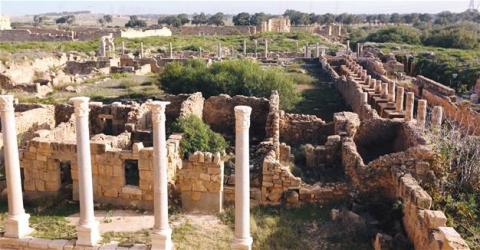The unlikely aviors of Libya's roman remains

Ali Hribish stands by the Arch of Septimius Severus which dominates Libya's ancient city of Leptis Magna, brandishing letters of gratitude for his efforts to protect the site. The former electricity company employee in his 50s has become the Roman city's unlikely savior, protecting it from looting and vandalism as chaos rocks the country following the 2011 downfall of former leader Moammar Gadhafi. Despite having no background in archaeology, Hribish gathered a band of fighters who dedicated themselves to preserving the ancient Roman city, a UNESCO World Heritage site.
While others set up armed groups to protect banks and public buildings, "We immediately thought of Leptis Magna," said Ashraf Mohammed, 33, one of the first fighters to join Hribish's group. "A bank can be rebuilt, but our monuments and our history are things we can't replace," he said. The group of 20 young men, Kalashnikov assault rifles in hand, go on a routine patrol around the 50 hectare site. They inspect the hippodrome, the basilica and the open-air theatre that used to host some 15,000 spectators on its terraces, with a sublime view of the Mediterranean.
Roman Emperor Septimius Severus, who was born in Leptis Magna and ruled Rome from 193 to 211 AD, favored his hometown and turned it into one of the most beautiful cities in the empire. He endowed it with splendid monuments including a vast basilica over 30 meters in height and renovated thermal baths built during the reign of Hadrian (76-138 AD). The open-air pool is still intact to this day.
Hribish, from the nearby city of Khoms, fears for the site's safety. Militants from the Islamic State of Iraq and the Levant (ISIL), which destroyed priceless artefacts in Syria and Iraq, are still active in Libya despite...
- Log in to post comments










